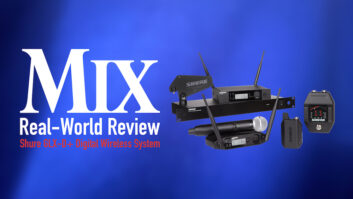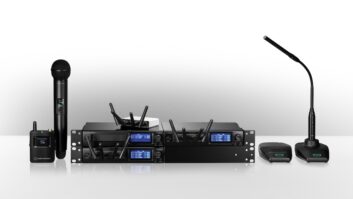Lectrosonics has been building high-quality RF gear here in the United States, in the Albuquerque area, since 1971. While initial efforts targeted the film and theater markets, the company has expanded its presence in live sound over the past ten years. The introduction of the M2 Duet system is a shot clearly aimed at the touring IEM market, though the system is equally at home in IFB applications.
The Duet System consists of the M2T transmitter and M2R receiver pack. The M2T provides two discrete stereo RF channels in a half-rackspace and broadcasts using digital modulation in the UHF band from 470 to 608 MHz, covering thousands of possible frequencies in 25kHz steps. Lectrosonics sent Mix one M2T and a pair of M2Rs for this review.
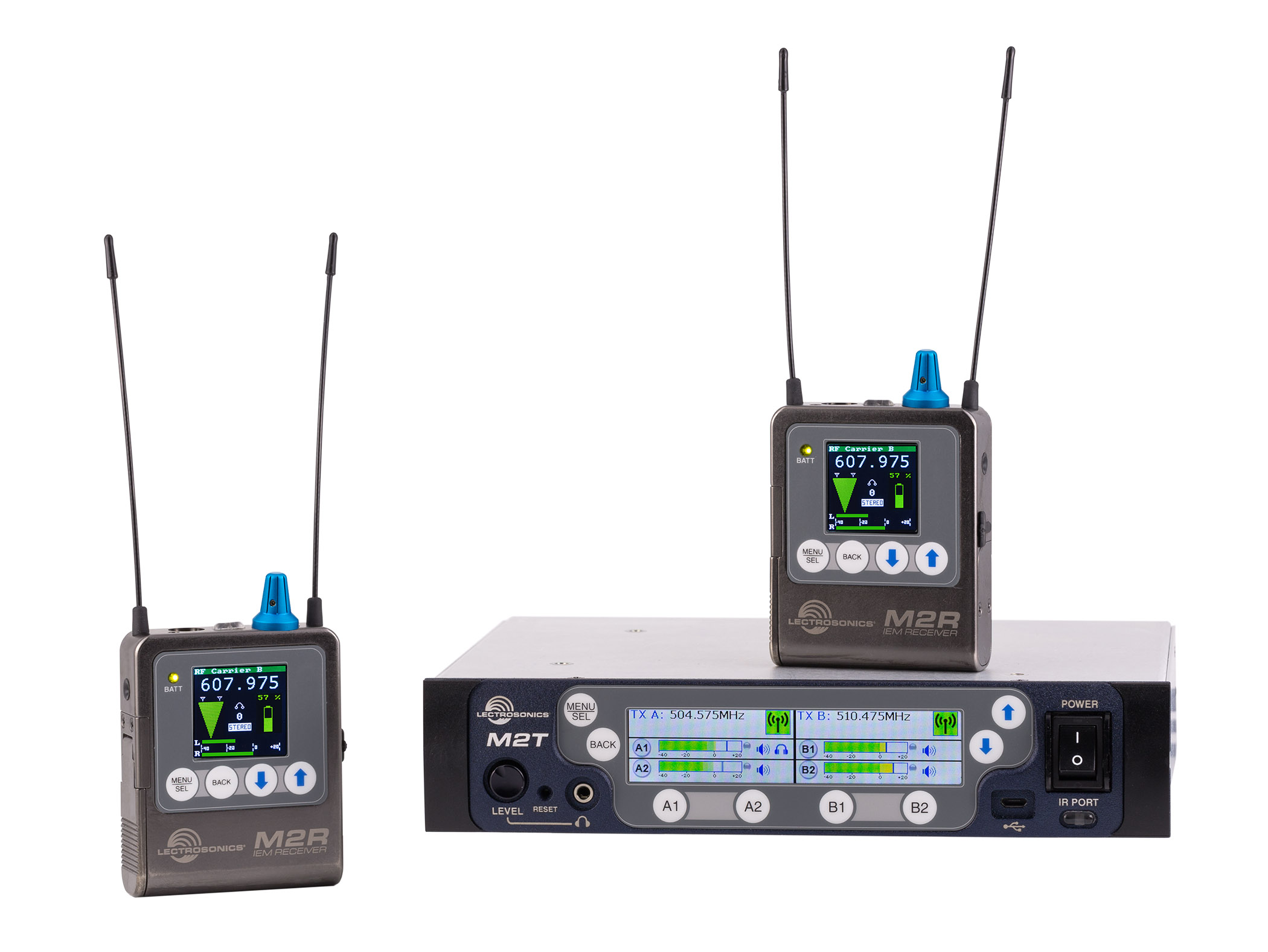
Little Bits
Duet employs Lectrosonics’ proprietary digital broadcast technology, whereby analog audio is converted to 24-bit digital data, encoded and sent to an RF modulator for transmission—quite different from systems employing multiplexed stereo analog FM transmission over a single RF carrier. As a result, Duet avoids the audio limitations often encountered in conventional analog transmission such as reduced dynamics, poor stereo channel separation, companding byproducts and rolled-off bass response. Duet boasts extremely low latency (1.4 mS using analog I/O) and very low distortion (less than 0.15 percent). The M2T’s rear panel is home to four Combo jacks and two Dante ports for analog and digital audio input, respectively (an analog-only version is also available). Two BNC receptacles mate with the included antenna, and a DC input jack features a threaded collar for secure connection to the included power supply. An Ethernet port enables connection to a Mac or PC running Lectrosonics’ Wireless Designer software. Around the front you’ll find a power switch, color LCD, IR port, headphone jack with volume control (retractable for transit), eight navigation buttons and a micro USB port.
Field Audio Mixer Cal Moots Counts on Lectrosonics for the Winter Games in Pyeongchang, March 6, 2018
Accompanying the M2T is the M2R receiver pack. Powered by two AA batteries (rechargeable or lithium), the M2R is a solid little bugger with a color LCD screen, on/off/volume knob, 3.5mm stereo headphone jack, and four membrane buttons for menu navigation. Two small whip antennas and the battery compartment cover are captive so you won’t worry about losing them. The M2R’s headphone amp can drive 250 mW—more than enough power for all but the least-efficient IEMs. A micro USB port is provided for firmware updates.
The M2R’s input mixer allows the pack to run in stereo or in mono from the M2T’s left or right input (or both). This makes it possible for a single M2T to run four discrete mono packs over two RF channels, or one stereo and two mono. For my road test I configured the Duet for two stereo IEM channels.
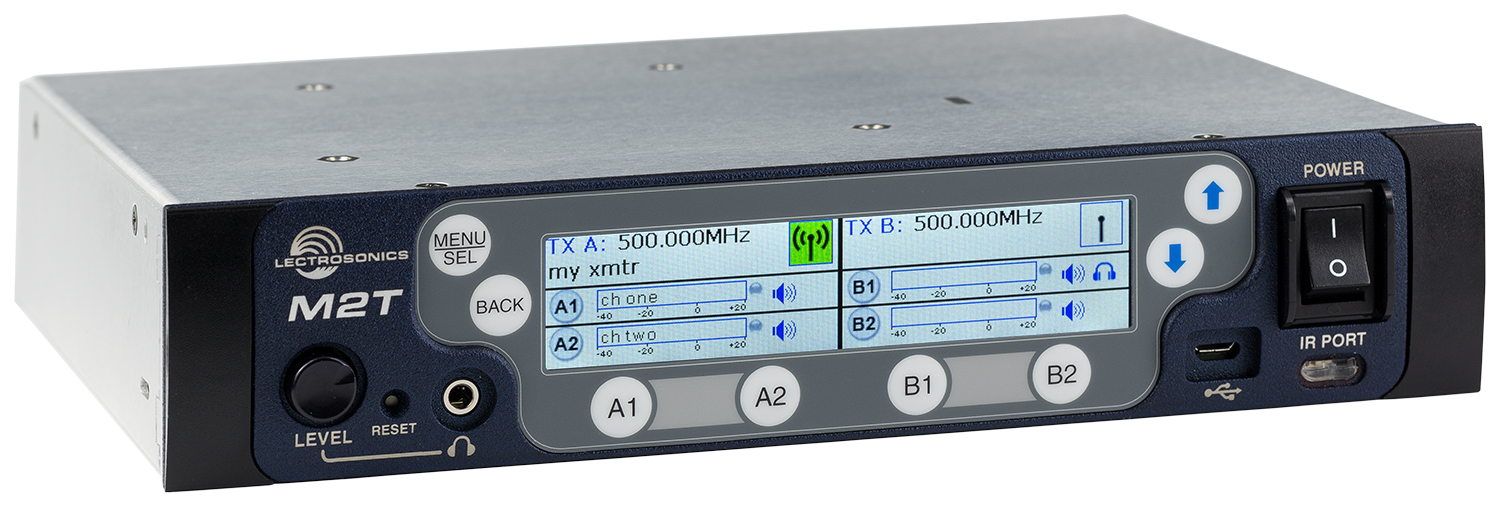
Road Power
The M2T offers the option of powering up with RF transmission enabled or disabled (factory default). This didn’t immediately make sense to me but became apparent after the first show. If the M2T transmits at startup, two things might happen: (1) it can inadvertently interfere with another nearby RF device, and (2) when you use the M2R to scan the RF environment, it will see its own transmitter as an occupied frequency. Be aware of this setting. If you turn off the M2T after soundcheck, you might be scrambling to find out why the system isn’t transmitting at show time. That’s what I get for not reading the manual first. For permanent installs, it may make more sense to enable transmission at start-up.
Typical for Lectrosonics gear, the M2R and M2T inspire confidence out of the box. The pack is constructed entirely from metal, and the switches and volume knob have a solid feel. When you turn on the M2R, the LCD shows the pack’s name, RF channel, RF signal strength, audio input level, battery level, input mode, and volume on a scale from 0 to 100. You can set the display to go dark after 30 seconds, 5 minutes, or never. A green LED indicates power on and battery OK; it turns red when battery life is around 30 percent and blinks red when a few minutes of battery life remain. A blue LED next to the headphone jack illuminates when the M2R has locked to the M2T (which it always did).
Lectrosonics Duet Digital Wireless Monitor System Now Shipping, Dec. 1, 2017
There are several ways to set RF channels. Using the M2R’s “Smart Tune” initiates an RF scan, after which the device automatically tunes to the best available RF channel. “Scan” initiates a scan, displays it on-screen, and lets you scroll through channels with low or no RF activity, then pick and “Keep” a channel. Of course, you can set a frequency manually. After the M2R’s RF channel is set, you “Sync” it with the M2T (see Try This).
The first few times out we used the Scan and Sync functions, then later used Smart Tune, all of which worked perfectly. Console outputs were fed in stereo pairs to the M2T using the analog inputs at +4 dBu. Input level can be set to -10 dBV and trimmed if needed.
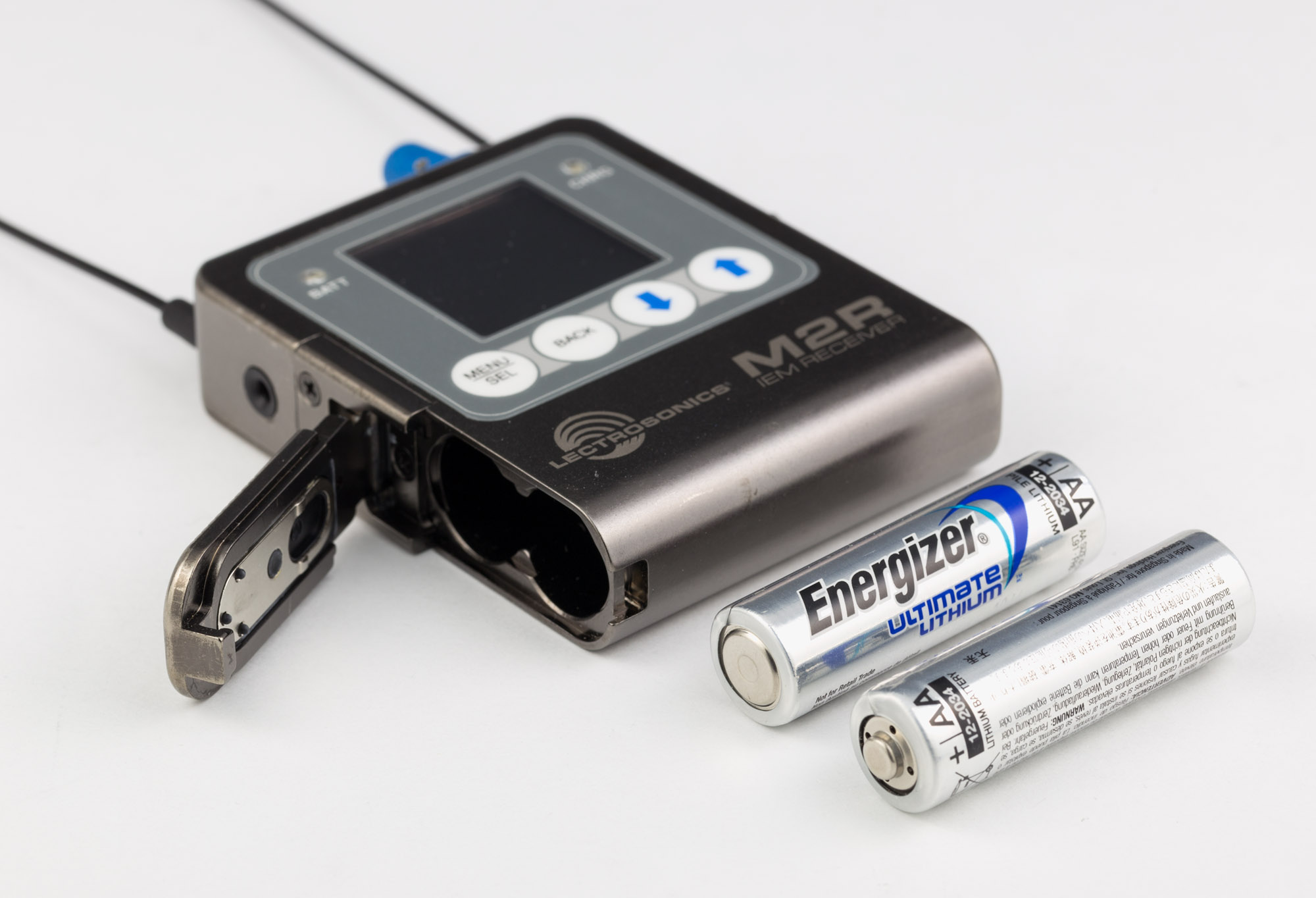
Wireless Designer
Available as a free download, Wireless Designer software provides an overview of connected Lectrosonics devices and facilitates total control of the M2T via Ethernet or USB. I initially experienced problems connecting via USB, but once I updated the EPROM in my M2T to the current version, it worked flawlessly with my MacBook Pro (I had a very early system). Once WD has acknowledged the transmitter, you can do things like name the transmitter and receiver, access limiter and HF settings, set the mix mode, turn RF transmission on or off, and mute audio channels.
Wireless Designer is capable of some slick operations. For example, let’s say you perform an RF scan on the M2R. You can send this scan to the M2T, which displays the RF analysis on its LCD along with the two transmission frequencies. That scan will automatically appear in WD’s Frequency Scan window. You can export this data to the Frequency Coordination window. When a conflict is detected, WD lets you know in big red letters. Viewing scan data in Wireless Designer is easier due to the size of the screen, but there’s nothing functionally that you can’t do in either environment.
A Flying Duet
Using the Duet system for several months on tour dates across the U.S. was an absolute pleasure. I set RF transmission power to 25 mW and it worked like a champ (it can also be set to 10 or 50 mW). When arriving at a venue, we often used Smart Tune to poll the RF environment and set channels. In situations requiring coordination with other acts, RF channels were set manually. I loved the fact that I could name a pack and see that name on both units, thus preventing any pre-show confusion regarding which pack belongs to whom.
It’s worth noting that the M2R gets rather warm after about 20 minutes of use, but not annoyingly so. The M2R drove my Etymotic ER4s and JH Audio 13V2 Pro earpieces far louder than I’d ever want, while remaining clear and distortion-free. Its adjustable limiter is applied to the headphone output (not the audio input signal), so you may not hear it until your ‘cans are really loud.
Want more stories like this? Subscribe to our newsletter and get it delivered right to your inbox.
Toward the end of the review I was able to get a third M2R and used the FlexList feature. FlexList enables you to create and name “profiles” of all of the Duet users in a system, add these profiles to a receiver and cue them from that receiver—instead of using cue at the console. I was able to create profiles for the two other packs and instantly eavesdrop on their mixes. Absolutely brilliant.
Dynamic Duet
The bottom line for the Duet comes in evaluating RF performance, audio quality and latency. The Duet’s RF performance was impressive. We rarely had issues with interference or dropouts, even in situations where other wireless gear was having problems. In busy environments like casinos, Smart Tune made easy work of finding open RF channels. Latency was simply not an issue.
Lectrosonics Announces 600 MHz Trade-In Program for North American Customers, Oct. 25, 2017
Audio quality produced by the Duet was fantastic: clean and balanced across the frequency spectrum with excellent imaging and extended bass—as close to a wire as I have heard IEMs produce. The system resolves tons of detail on sounds like reverbs and delays while maintaining the dynamic range of the source. It doesn’t sound “bassy” or “bright” unless you dial up the HF boost, which remains musical.
The M2T has headroom for days, and you can push the mixing console’s bus as far as it will take you before you’ll hear the Duet complain. Lectrosonics has really done an outstanding job on the Duet, raising the bar for IEM audio quality in the process.
Try This: The M2R’s Smart Tune feature automatically scans the local RF environment for open channels and programs the unit to receive on the clearest open frequency. With the M2R powered, press MENU/SEL twice. The M2R will search for an open RF channel and automatically set the receiver to it. To sync the M2T with the M2R, press the M2T’s MENU/SEL button, scroll to Sync Scan and press SEL again. Scroll to Sync and press SEL. Scroll to Get Freq for the respective M2R and press SEL. Hold the M2R so that its infrared port faces that of the M2T and press Go. The M2T will acquire the frequency from the M2R.
Product Summary
Company: Lectrosonics
Product: Duet IEM System
Website: www.lectrosonics.com
Price: M2T Dante $3,193, M2R $1,480 (MSRP)
Pros: Great RF performance; excellent sound quality; easy to use; interfaces with Wireless Designer software; robust build quality
Cons: Expensive (but you’ll get over it)


